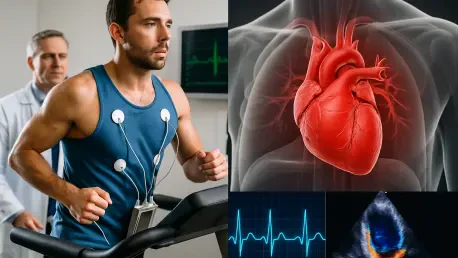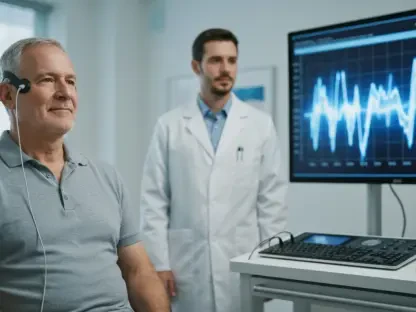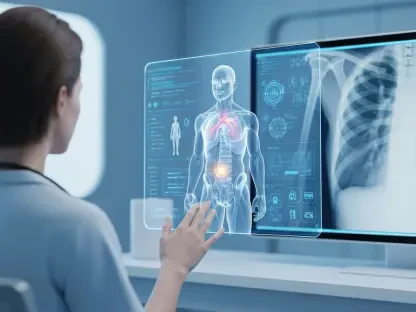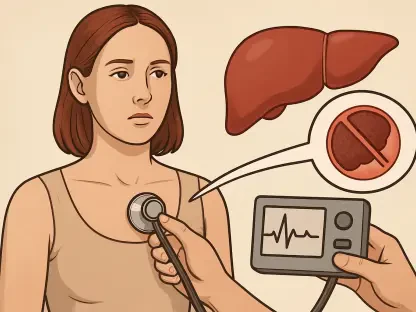In the dynamic world of sports, where athletes push their bodies to extraordinary limits, ensuring cardiovascular health has never been more critical, especially with a surge in both competitive and recreational sports participation. The risk of undiagnosed heart conditions looms large, potentially leading to tragic outcomes. Sports cardiology, a specialized field bridging athletic performance and heart health, faces the daunting task of distinguishing between benign adaptations and dangerous pathologies. Advanced imaging technologies, such as cardiac MRI (CMR) and coronary CT angiography (CCTA), have emerged as game-changers in this arena. These tools offer unprecedented precision in diagnosing conditions that could otherwise go unnoticed until it’s too late. By providing detailed insights into the heart’s structure and function, imaging is revolutionizing how cardiologists assess and protect athletes, ensuring that their pursuit of excellence doesn’t come at the cost of their well-being.
Unveiling the Athlete’s Heart Through Imaging
The concept of the “athlete’s heart” refers to the natural structural and functional changes that occur due to intense training, often mimicking serious cardiovascular conditions. Distinguishing these benign adaptations from life-threatening issues like cardiomyopathies poses a significant diagnostic challenge. Missteps in this process can have dire consequences—either unnecessarily barring an athlete from competition or failing to identify a condition that could lead to sudden cardiac events. Advanced imaging, particularly CMR, plays a pivotal role in resolving these ambiguities. By offering detailed tissue characterization, CMR helps differentiate normal adaptations, such as symmetric left ventricular hypertrophy, from pathological changes. This technology integrates clinical factors like age, sex, sport type, and competition level to provide a comprehensive diagnostic picture, ensuring that athletes receive accurate assessments tailored to their unique profiles.
Beyond initial screenings that include clinical history, physical exams, and electrocardiography (ECG), advanced imaging steps in when results are inconclusive or concerning. For instance, when echocardiography raises red flags or symptoms like chest pain and palpitations emerge, tools like CCTA become invaluable. CCTA provides high-resolution views of coronary arteries, detecting anomalies or disease that might otherwise remain hidden. This capability is especially critical for older athletes or those recovering from significant cardiac events, such as arrhythmias or resuscitated cardiac arrest. By combining imaging findings with other test results, sports cardiologists can make informed decisions about an athlete’s eligibility to compete and establish protocols for long-term monitoring. The precision of these imaging modalities not only enhances diagnostic accuracy but also builds confidence in clinical decisions that balance athletic aspirations with health imperatives.
Enhancing Risk Stratification and Clinical Decisions
Risk stratification stands as a cornerstone of sports cardiology, ensuring that athletes are neither over-diagnosed nor under-diagnosed. Advanced imaging techniques have significantly elevated the ability to assess risks with precision, particularly in borderline cases where symptoms or initial tests suggest potential issues. CMR excels in providing insights into myocardial tissue characteristics, helping to clarify whether observed changes are benign or indicative of serious conditions. This is especially vital for symptomatic athletes or those with a history of cardiac events, where accurate diagnosis can mean the difference between safe participation and catastrophic outcomes. By layering imaging data with other clinical information, cardiologists can craft individualized risk profiles that guide decisions on sports participation and necessary interventions.
Moreover, the role of imaging extends beyond diagnosis to influence long-term clinical management. CCTA, with its detailed visualization of coronary artery health, aids in identifying conditions that require ongoing surveillance or immediate action, particularly in athletes at risk for coronary artery disease. This technology complements CMR by addressing specific anatomical concerns, ensuring a holistic approach to cardiovascular evaluation. As sports cardiology continues to evolve, the integration of these imaging tools into standard practice reflects a broader trend toward precision medicine. The ability to differentiate between physiological adaptations and pathology not only protects athletes but also supports their careers by preventing unnecessary restrictions. Ultimately, imaging empowers clinicians to navigate the complex interplay of athletic performance and heart health with greater certainty and care.
Reflecting on Imaging’s Lasting Impact
Looking back, the integration of advanced imaging into sports cardiology marked a transformative shift in how cardiovascular health was safeguarded among athletes. Techniques like CMR and CCTA redefined diagnostic precision, ensuring that the fine line between athlete’s heart and dangerous conditions was navigated with unprecedented clarity. Moving forward, the focus should be on expanding access to these technologies, particularly in underserved regions or for recreational athletes who may lack routine screenings. Investing in training for clinicians to interpret imaging results effectively will also be crucial. Additionally, fostering research to refine imaging protocols and establish universal guidelines can further enhance diagnostic consistency. As the field progresses, embracing these next steps will ensure that the legacy of imaging in sports cardiology continues to protect and empower athletes, harmonizing the thrill of competition with the assurance of safety.









